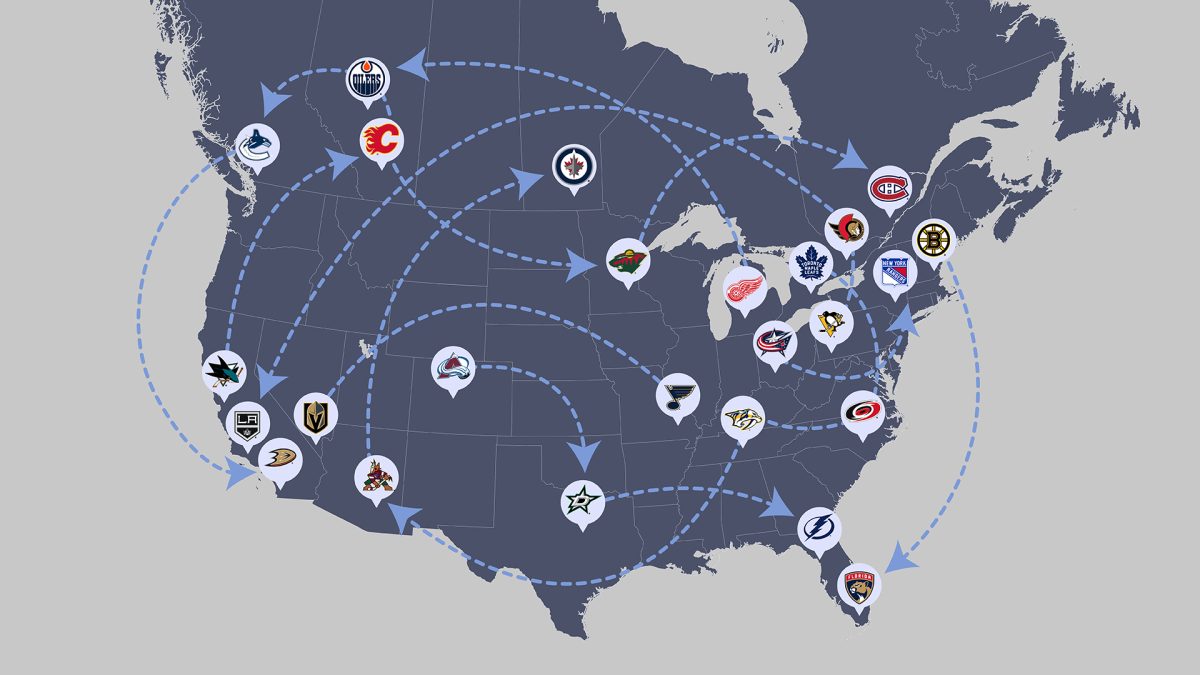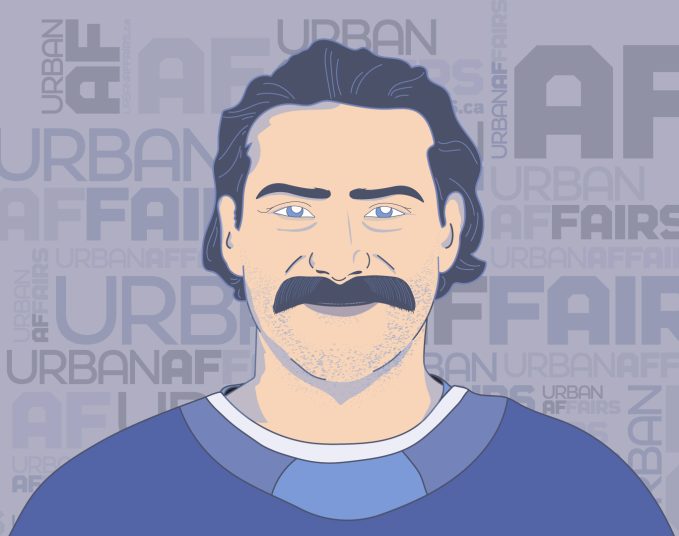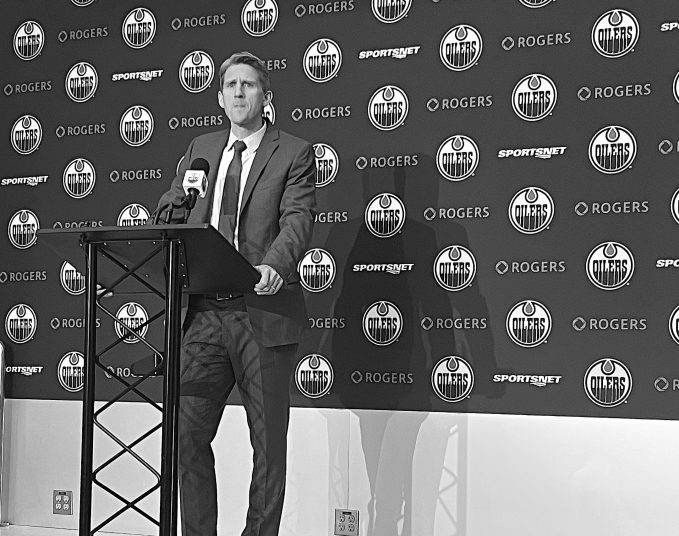Imagine this:
“Wilkins, please come into my office.”
“Yes, sir.”
“Close the door.”
“Sure. Why did you need to see me, boss?”
“Well, you’re doing a great job in accounts receivable. But so is Biggs. And, well, we need a new warehouse manager. So, I talked to my pal Dennis at Wise Solution Paper Products in Columbus. He’s going to send his warehouse manager here, he feels that he could use a fresh start in a new city. It’s tough to break this to you, but you’ve got to report to Wise Solution tomorrow at 9 a.m. Here’s a plane ticket to Toronto, you’ll connect there to Columbus.”
“But my wife has a job, here. My kids are in school.”
“I feel for you. But that’s how it is — 9 a.m. tomorrow. Columbus. Plane leaves this afternoon. Gives you enough time to pack.”
Or, maybe, this:
“Congratulations to you, finishing top of the class in law school. Also, you won the United Nations-sponsored international student debate. Your work in human-rights advocacy is internationally recognized. Now, as I present you with your degree, I just wanted to let you know that you’ll be off to Thunder Bay to work for Real Joe Injury Law.”
“Why?”
“Well, you’re the best law student in the program, probably the nation. So, that means the worst law firm in the country has selected you. You don’t really have a say in this. Once you work for them for a few years, you will start to get some rights. In about eight years or so you’ll have some control over where you want to live. But that’s the price you pay for being the best.”
Ridiculous, right? On the contrary. For North American sports fans, we live for it. We love the fact that athletes still have little control over where they play. Trade deadlines make our adrenaline flow. We follow salary caps with the same fervour as Ferengi have for the Rules of Acquisition. In the big leagues, they make millions of dollars, they don’t have a right to complain, right? And, for the star players, after several years of being at or near the top, they might be able to negotiate some no-trade clauses into their contracts.
So why is it that in North America, where we speak so much of rights to movement and self-determination, that we allow players to be traded and selected as if they were cattle at an auction on a Wednesday afternoon in Westlock?
After all, there is a salary cap. It prevents the New York Rangers from hoarding all the top-tier talent in the league. Shouldn’t the next Connor Bedard have the right to negotiate with as many teams as he and his agent want, and cut the best possible deal? If he wants to ask for $8 million a year right off the bat, why shouldn’t he? And if a team wants to dedicate that much cap space to a rookie, it should be their risk to take. Why should bad teams be rewarded for being… bad? We are told that sport is a meritocracy, but the draft is a celebration of incompetence; the worst get to the front of the line.
In the rest of the world, in the world’s biggest game, players aren’t subject to a draft. If Real Madrid wants to sign a soccer phenom that one of its scouts spotted, it can — as long as the player agrees to terms. There are some anti-trafficking laws that forbid teams from plucking underage players from other nations, but there are ways around them through multiple citizenships and grandfathered citizenship rights. When players are under contract, they can be sold, as long as they and their agents agree — and they often get percentages of the transfer fees. Basically, if you want to move a player, the player should see some money, and the player has to be involved in the process.
Players are allowed to negotiate with other teams a few months before their current contracts expire. And transfers for in-contract players can only occur in two “windows” during the year.
So why is it that in North America, we have a player-movement system that the rest of the world sees as archaic and needlessly restrictive?
Since the majority of NHL teams are based in the United States, and the league is headquartered in New York, we need to look at quirks in American law that allow for trades and the draft when, on the surface, they would be seen as anticompetitive acts. After all, the Sherman Act does not allow for any organization to restrict or place other constraints on inter-state trade. And trades and the drafts, make no bones about it, are constraints.
Leah Farzin’s excellent piece in the Jeffrey S. Moorad Sports Law Journal lays out why the NHL and other leagues manage to wriggle out of what, on the surface, is very basic law. It’s called the “Rule of Reason.”
“The Rule of Reason is an alternative to declaring that a particular action is anticompetitive on its face. U.S. law applies the Rule of Reason in sports cases because of a general recognition that without horizontal agreements between clubs, no club could produce its product.”
Basically, for fans to be more interested in the Edmonton Oilers, they need the Calgary Flames to be competitive. If the league does not have a competitive balance, the entire business suffers.
That doesn’t apply in the major European soccer leagues; Bayern Munich is on a string of Bundlesliga titles that dates back to 2012. In Spain’s La Liga, the championship has been the sole domain of three teams since 2005 — Atletico Madrid, Barcelona and Real Madrid. These are leagues that have massive global followings — so there is an argument that super-teams are just as attractive to fans, maybe even more so, than parity.
In the Sports Lawyers Association blog, the University of New Hampshire’s Trevor Brown wrote that the collective bargaining agreements between leagues and their unions allow for exemptions from law, because draft and the trades are an accepted part of the process.
“The only path to rid the league of amateur drafts that are collectively bargained for is not to sue the league, but to sue the union,” he wrote.
So why should we feel sorry for players making millions of dollars?
Understand that athletes have to make sacrifices in order to try and hit the one-in-a-million shot of making the big leagues. You don’t have time to take a part-time job when you’re in your school years — you train pretty well every day of the week. It costs tens of thousands of dollars a year for hockey players to play at an elite level. You understand that if you do make it, the average career is short — I’ve heard many players and agents refer to it as the “earning window.” You have to maximize your earnings to make up for the fact that you likely don’t have the skills to do much else. Sure, there are athletes like Randy Gregg who were NHL players and were able to finish medical school, but, for the 99 per cent, it’s about dedicating oneself to sport.
There are taxes to pay and fees that go to agents. You hope for some endorsement deals. But the likes of Jordan and LeBron selling shoes, and Patrick Mahomes selling shampoo, give us the the distorted view that the ad-campaign money tree is available for anyone with a jersey on his, her or their back.
Yes, I see you playing the world’s smallest violin. But my take is this, if you have a problem with what the players make, are you watching the games on TV? Buying jerseys? Going to games? When it comes to salary envy, there are a lot of pots calling the kettle black.
In a press conference before the deadline, I asked Oilers coach Kris Knoblauch what it was like to steer a team in the days leading up to the trade frenzy. For many players, deadline season is the worst time of the year.
“It’s obviously very difficult,” said Knoblauch. “You try and ease their anxiety, talking with them and tell them their situation. Players are very uncertain about their future, but if you look at how valuable they are to our team… there’s so much out of my control, and the last thing I want to say is to tell a player something is OK when it might not be.
“There’s a room full of guys, I appreciate what they do. I think we’re a pretty good hockey team, and I can’t imagine not having them.”
Savvy AF. Blunt AF. Edmonton AF.




